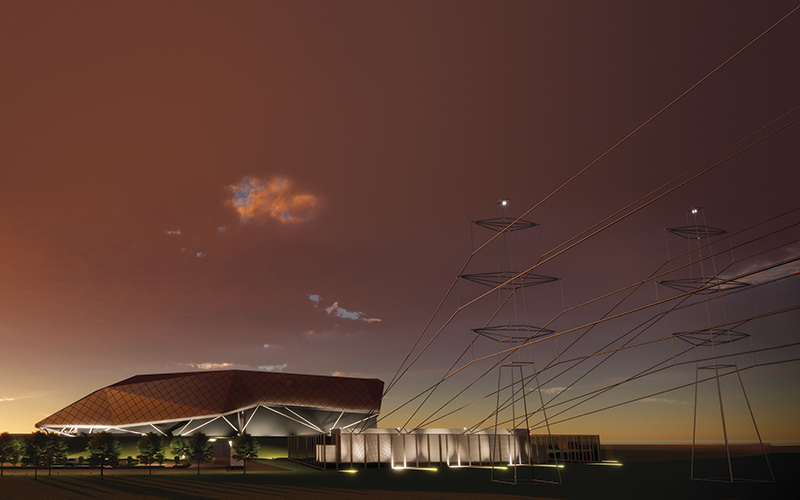Is Nuclear black on the table?
Nuclear is back in the limelight and can no longer be dismissed as a viable and sustainable solution, says George Borovas at Hunton Andrews Kurth

The past few months have been remarkable when it comes to the prospect of seeing a wave of new nuclear build around the world.
Romania has signed an agreement to build new reactors with the support of the US, and France has pledged to build as many as 14 new reactors from 2028. Meanwhile, the UK is backing plans for new nuclear power plants and has announced a new government-supported financing model for nuclear projects, the Regulated Asset Base.
Poland, Estonia and Saudi Arabia have also been in the news with their ambitious plans to develop new nuclear power programmes, while the EU has classified nuclear power as a green investment under the EU Taxonomy for sustainable activities. There are even announcements for new nuclear plants in the US.
Are all these a sign of things to come, or will this be yet another ‘nuclear renaissance’ that is never realised?
Rising to the net-zero challenge
Nuclear energy is one of the cleanest and most efficient sources of energy around, and could be a sustainable and relatively economical option for meeting growing global energy demand. In addition, nuclear energy outperforms many other low-carbon forms of energy because nuclear power plants produce carbon-free electricity 24 hours a day, seven days a week while requiring comparatively little land and materials and producing low quantities of toxic waste.
As a generation technology, nuclear has has some of the lowest life-cycle carbon emissions, and has been proven to provide affordable, reliable, scalable and safe power. At this point, nuclear power, along with hydroelectric and geothermal, are the only low-carbon technologies that have been proven to provide safe and affordable non-intermittent electricity.
SMRs and advanced reactors
Emerging new small modular reactor (SMR) and advanced reactor (AR) designs offer promising solutions that may help to mitigate many of the financing and risk challenges that we have seen with earlier nuclear power projects. SMRs and ARs are expected to have greater simplicity of design, economy of production (largely in factories), shorter construction times and reduced siting costs. Most are designed for a high level of passive or inherent safety, reducing the need for additional safety structures and large emergency protection zones. In addition, SMRs and ARs are suitable for areas and applications that are poorly suited to large nuclear power plants, such as small islands and areas with limited access to cooling water, countries with small grids, or other energy-intensive applications, including mining.
The case for new nuclear
The world can meet only 39% of its electricity demand through low-carbon generation sources, and carbon-intensive fossil fuels currently meet the remaining 61% of existing demand. As the global population continues to grow, so will the need for power generation and energy. Accordingly, a range of technologies, including nuclear power, will be needed to provide clean energy transitions around the world – and while renewables will continue to lead, it will also be necessary for nuclear power to play an important part.
So, it appears that, for good reason, nuclear is indeed back on the table.
Nuclear today
Today, nuclear power makes a significant contribution to electricity generation, providing approximately 10% of global electricity. According to the International Atomic Energy Agency, the world currently operates a fleet of 443 commercial nuclear reactors, with a total installed capacity of 393GW. Currently, 30 countries have already included nuclear power in their generation mix and have operational commercial nuclear reactors. In addition, there are 51 nuclear reactors currently under construction in 19 countries.
Is the tide turning for nuclear?
New global nuclear projects
- France has pledged tens of billions of state support to build up to 14 new generation reactors and a fleet of smaller nuclear plants. The plan is to order six new-generation EPR2 reactors from EDF, while launching studies for eight more
- The US announced a US$25m Nuclear Futures Package and will partner with Brazil, Indonesia, Kenya, Poland, Romania and Ukraine, among others, to support progress on meeting their nuclear energy goals
- The UK awarded Rolls-Royce £210m to pursue design and regulatory approval of SMRs in the UK
- Westinghouse Electric Company and Energoatom, Ukraine’s state-owned nuclear utility, signed a contract to develop the first AP1000 unit in Ukraine
- The US’s NuScale Power and Romania’s national nuclear company Nuclearelectrica have announced an agreement to build the first SMR in Europe
- Polish companies Synthos Green Energy and PKN Orlen signed an agreement to establish a joint venture for the deployment of a SMR fleet in Poland, which will commercialise SMR technology – in particular, GE Hitachi Nuclear Energy’s BWRX-300
- Ontario Power Generation will work with GE Hitachi Nuclear Energy to deploy an SMR at the Darlington new nuclear site in Canada
By George Borovas, Head of Nuclear and Managing Partner, Hunton Andrews Kurth Tokyo
Image credit | Rolls-Royce






Follow us
Advertise
Free e-Newsletter